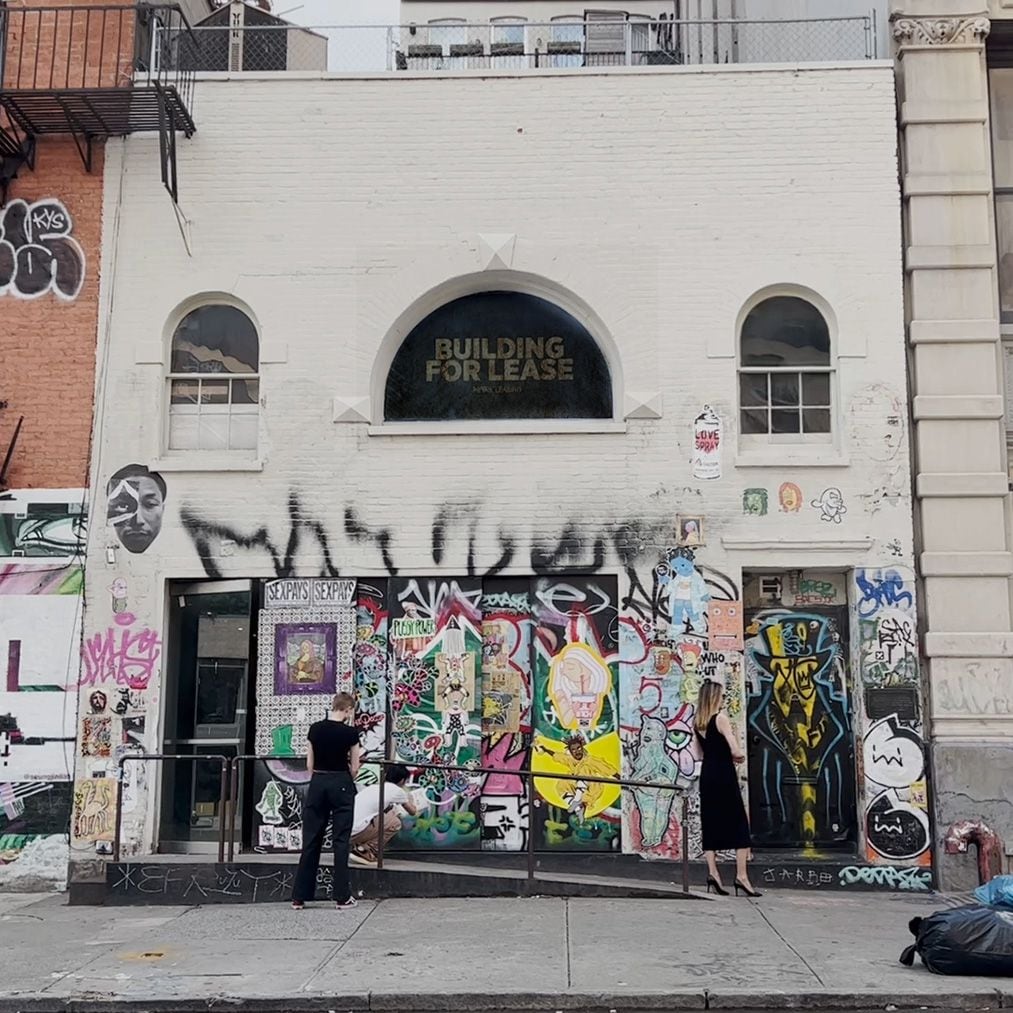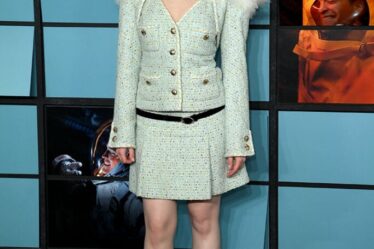
For Atelier Jolie’s first permanent retail home, founder Angelina Jolie chose an address with a storied past.
The Oscar-winning actress’s new fashion venture opened its doors Tuesday at 57 Great Jones Street in New York’s NoHo neighbourhood, inside a former carriage house previously owned by Andy Warhol and which served as Jean-Michel Basquiat’s studio and home. In the years since, the 6,600-square foot building has been a site for street artists to paint with graffiti.
Jolie’s plans for the location are ambitious: she hired architects Enrico Bonetti and Dominic Kozerski to design a three-floor, 6,600-square-foot space that’s part retail store, part cafe and part community centre. Customers can browse seasonless fashion, sample food and drink from a diverse array of chefs or consult with designers on one-of-a-kind pieces. The design is sleek and minimal, with limewash-painted brick walls, white floors and bronze accents meant to reflect details in the garments available in-store.
In a nod to the artistic roots of the building and surrounding neighbourhood, however, the graffiti-covered facade will remain unchanged.
“There’s a long history to it and it’s very important,” Jolie tells BoF founder and editor-in-chief Imran Amed in this week’s forthcoming episode of The BoF Podcast. “That is not my place to change or put some big sign over.”
The opening comes seven months after the actress and humanitarian announced the launch of the business, which will take a collaborative, sustainable approach to fashion. At Atelier Jolie, design responsibilities are shared by a global group of artists, artisans and textile designers, many of whom are immigrants or refugees. The company will also only use deadstock materials. Many Atelier Jolie pieces will be one-of-a-kind; customers are encouraged to customise their items according to their tastes.
“I’d like to believe that we can have good, successful businesses where you’re not hurting the little guy and you’re not taking advantage along the supply chain just to make that extra profit,” Jolie said.
The ground floor will be Atelier Jolie’s retail area, showing a seasonless collection which can purchased as either a finished product (available via a limited run in store and online), a set pattern (which can be printed to be brought to a tailor or constructed at Atelier Jolie) or a customisable pattern (which customers can use to create a bespoke design). Also on the ground floor will be a café featuring chefs from a variety of backgrounds serving cuisine connected to their cultures.
The floor above is home to Atelier Jolie’s consultation studio where, by appointment, customers can meet with a rotating group of designers to create made-to-order garments or upcycle existing pieces.
The store will also play host to events and talks from contributing designers and other artisans.
“I tried to make it as open as possible and hope that it goes well,” said Jolie. “You never know the people that will come in or how they’re going to use the space. But I would hope there’s some goodwill and genuine interest in supporting it the way it is meant to be.”
Additional Atelier Jolie locations are in the works, with each location emphasising the history of craft and design of the host city.
For more on Atelier Jolie and Jolie’s conversation with Amed, listen to this week’s episode of The BoF Podcast, which will be released on Friday, Dec. 8.



